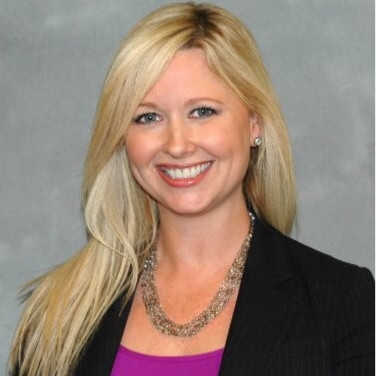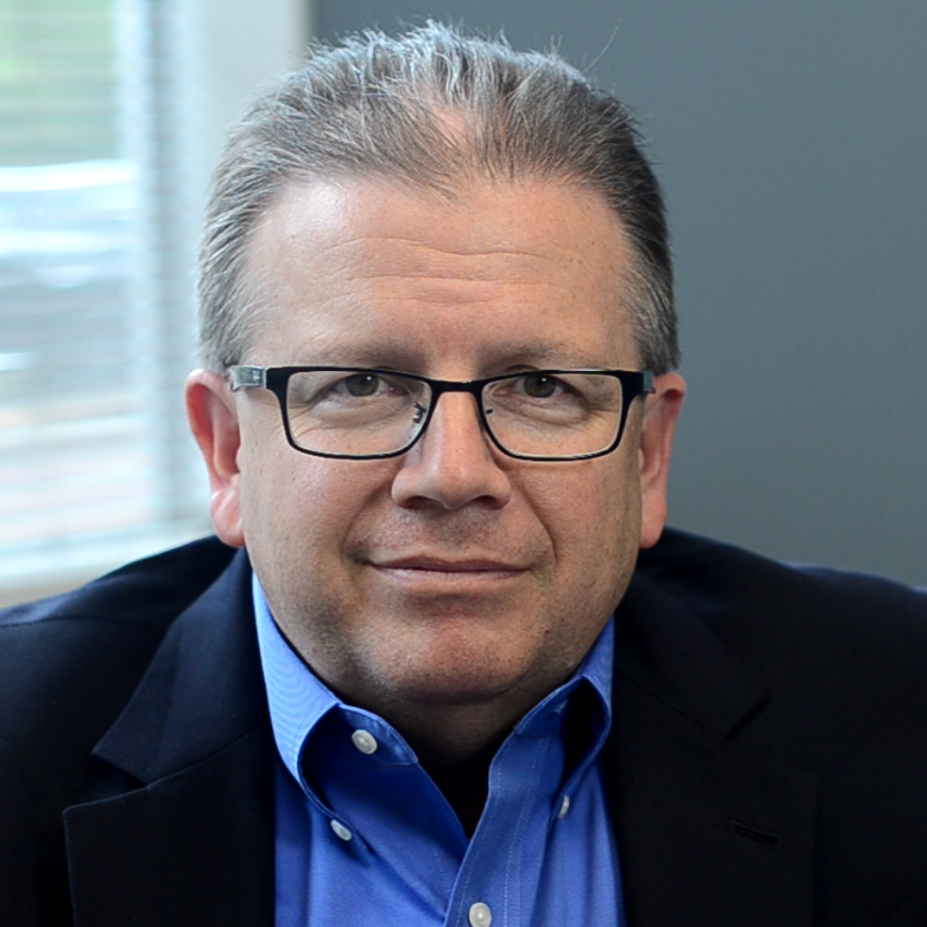
Episode 45
Becoming a Treasurer: Part 5 – How to Develop a Team
Host:
Meredith Zonsius, Strategic Treasurer


Speaker:
Craig Jeffery, Strategic Treasurer


Episode Transcription - Part 5: How to Develop a Team (Becoming a Treasurer Series)
Zonsius: Welcome to the Treasury Update Podcast. I’m Meredith Zonsius, the Communications Manager at Strategic Treasurer. I’m sitting here with Craig Jeffery, our Managing Partner and Founder. Today we’re excited to continue our series of episodes on Becoming a Treasurer with Part 5: How to Develop a Team.
Zonsius: For those who are just tuning in, this series explores questions around becoming a treasurer. As a recap, we kicked off the series with Part 1 – How to Prepare. This included the concept of mindset, which started the discussion on communication and taking a long-term view.
Zonsius: Next on Part 2 – What to Do When You Become a Treasurer. This session covered some of the initial activities that are vital for all new treasurers. Part 3 – What to measure. We examined the process of measurements and how they help convey significant meaning, status and progress
Zonsius: Part 4 – How to Communicate Effectively. We covered key principles to help treasurers navigate internal and external communication challenges. Now, today we launch into developing a team.
Zonsius: Welcome, good morning Craig.
Craig Jeffery: Good morning Meredith.
Zonsius: What are we going to cover regarding a treasury team?
Craig Jeffery: Well, I’d like to talk about both developing a team and building a team. I think both of those are important. There’s a number of differences that exist based upon the type of organization, the size and complexity of the organization, where they’re going. I think they need to be handled together. I’d like to cover both.
Zonsius: Perfect. Let’s start with the differences. What differences matter for team building?
Craig Jeffery: Well, complexity of a treasurer organization is one element. That can be reflective of complexity of an organization, or just the size, the industry and where they’re located. For example, a multi-billion dollar firm generally is more complex than a smaller firm, but that’s not always the case. It depends on how many countries you’re dealing with, the complexity of your debt structure. What’s the volume of your payments? What types of risk you have to manage.
Craig Jeffery: Some of the challenges of those smaller organizations has to do with size of a treasury organization. Treasure organizations tend to be pretty small relative to finance, for example. Smaller organizations tend to have very few treasury people, and this makes a difference. Smaller firms or firms with smaller treasuries, the treasury professionals there have to wear a lot of hats.
Craig Jeffery: Then, when you get to a large organization, there tends to be larger staff and greater specialization. There might be someone handling short-term investments, medium-term investments, strategic investments, for example.
Craig Jeffery: Whereas a small firm may have one person handling that, forecasting, responsible for operational movements. Someone else handling the banking structure.
Craig Jeffery: There’s a pretty big difference between the type of organization. Certain organizations that are risk-intensive maybe with commodities or non-bank financial institutions with payments and invest activity. Those are some of the key differences and that matters what you put in your team. Whether you have to have a bunch of specialists or you can have a number of utility outfielders, those that wear many hats and do a lot of things in treasury.
Zonsius: Building a team is the next area I’d like to hear about. What should treasurers think about when putting their team together?
Craig Jeffery: Yeah, sometimes you have the opportunity to build a team from scratch, from a blank sheet of paper. Oftentimes you’re working with the team members that you have there, which can be very well-aligned or there might be some gaps with what the organization needs to do and where it’s been. There’s a couple different views to building a team. I’d like to talk through a couple of the different concepts.
Craig Jeffery: One is … One concept that a number of very successful treasurers use is making sure they have adaptable players. Players that can pick up and go deep in skills in particular areas, and can move onto other responsibilities and continue to improve the organization. They’re looking for adaptability. That concept is getting the right people on the bus and they can move around to different seats. That’s worked well for a number of organizations and for a number of treasurers.
Craig Jeffery: The other model is finding complimentary players. Players that fit together like a puzzle piece. This is the concept of … You have different roles, different rules. You want to make sure you’ve got a very good fit from day one. You do want to develop people. You want different players, different team members that are specialized in different areas that can get you the results and get the organization the results that are necessary, whether it’s operational, access to credit, relationship management. Those are the concepts of complimentary players, specialists.
Craig Jeffery: That works quite well for other organizations, too. Sometimes it’s a combination of deep specialists with some very solid players in particular areas. A key part here is when you look to putting together a team is the depth perception aspect. Now, treasury professionals, treasurers, CFOs, oftentimes have a different path to get there. Their path was unique and it’s helped them gain a significant amount of skills. They enjoy that, and that is something that each person can celebrate. The problem is thinking that that was the best path for everybody or that is the best path for everybody.
Craig Jeffery: That you need to hire someone who follows as closely to that path as you did, just because you came up out of an area doing FX trading and you’re very smart. You’ve had a great experience there. You’ve rotated through another couple of roles. That doesn’t mean that the best person to come in as your number two is going to have had that exact same experience. You really want someone who may have experience with treasury operations or access to the debt capital markets. You need that depth perception, some different views, and that hiring someone that’s a mirror of you or a mirror of your top people doesn’t give you that depth perception. It’ll be a bit of an echo chamber.
Craig Jeffery: The second general concept has to do with planned obsolescence. I think we have to realize that certain jobs, certain activities necessarily become obsolete. We have to make sure that those are being replaced or taking on new roles and new functions. You need people who drive obsolescence or redundancy of activities and others that will be maybe the same people. Certainly those that will pick up new roles, new activities that are sitting there that treasury is oftentimes not getting to. I think that the depth perception and planned obsolescence, that idea of constantly remaking the department is vital.
Zonsius: Those were helpful concepts. I’d like to hear more specifics about skills required for a team.
Craig Jeffery: Well, there could be a lot. This is … can be different for different organizations, of course. I don’t mean to give such a general response. Let me give a couple things that are general and applicable to almost every treasury group.
Craig Jeffery: You’re a new treasurer. You’re an existing treasurer. You’ve taken on more responsibility. What are the skills you need? I would say technical skills, technology skills, and mindset.
Craig Jeffery: The technical skills are deep skills in particular areas. This could be managing FX risk, commodity price risk, counter-party risk, whatever elements of risk you have. It could be about operational efficiency. Managing your banking structures, receipts, disbursements. Supporting the different lines of business, getting things stood up in a well-controlled manner in a constantly evolving and more efficient manner. Attacking defects, someone with operational technical skill set. Maybe someone with payment skill set, handling the changes in formats. The new payment methods is a way to support your relationship with the customers, with your trading partners. Driving efficiency through … on the payment side. We could go on about the technical skills, but you definitely need to look for and secure the right type of skill sets in the technical arena. Identify what are the top areas, especially where you’re intensive. Where it’s not as important, those utility outfielder players are those that are more versatile, can help fill in and develop those areas.
Craig Jeffery: Secondly is technology. Everyone has to look at this. It’s absolutely essential to have treasury people that are skilled in technology. They understand what’s going on. They may not know how to connect an API, or what a web services utility is fully. They understand how things connect. How things work together. What the technology means. What you should be experimenting with and piloting. Understanding where the biggest return is for robotic process automation. How can we take and implement that? There’s a definite technology set of skills that every organization has. To be honest, I think, you’re hiring someone and they’re pretty close in other areas. One person’s technology skills are more advanced. That’s a pretty significant check mark for the people that are more technologically astute.
Craig Jeffery: The amount of changes that are happening are so great. You have to have a number of people who are skilled technologically in different areas to help treasury do what it’s supposed to do. That’ll help them move the organization to … I’ll call it helpful change or beneficial change, constantly improving.
Craig Jeffery: Then, thirdly … Just for the three things that we’re talking about, I’m talking about mindset. This is the concept of, “I’m open to new ideas. I’m open to communicating.” This idea of open to new ideas. Either you’re bringing about change to a process or to the group, or that’s being brought about to you. You want to make sure that you have agents of change. A mindset of being open to new ideas. Not always chasing the shiny new penny. Understand the difference between buzz words and some of the technology or some of the actions or structures that people are experimenting with or starting to implement that can matter. Being open to those new ideas, astutely, thoughtfully, moving forward with some of those ideas. That’s one being open.
Craig Jeffery: The second mindset is that the learner, an aspect of continually learning for all your leadership team. It’s not, “Oh, my head’s full. I’ve listened to the entire Internet, so I don’t need to learn anything else.” You’re going to learn every meeting, every conference someone goes to, every peer interaction. They should be picking up new ideas, new ways of doing things. They should be learning different subjects about the business, about life, about communication. Open to new ideas. Be a learner.
Craig Jeffery: Then, as I mentioned a little earlier, just being a practical agent of change or an efficiency expert. Everybody should be someone who’s either helping to make a change in a process between areas, between systems. They’re focused on increasing the efficiency. They’re focused on making changes that leapfrog the organization from the 2000s to the 2010s to the 2020s. Moving from legacy-style connections to new connections. Moving from older formats that are delimited formats to intelligent formats, more enriched formats like extensible markup language or XML.
Craig Jeffery: We need people who are agents of change and a mindset of an efficiency expert because we always have to drive costs out. Every treasurer has to protect the assets and has to drive costs out.
Craig Jeffery: That brings us to the fifth area that I’ll talk about in terms of a mindset as the risk mindset. Everybody on staff has to have some level of a risk mindset. You certainly need a lot who are thinking about, “How do I derisk my banking structure, my banking relationships, my payment process. What the organization is doing from a business perspective.” Having that risk mindset will impact every area of the business as well as the core treasury responsibility. Those mindset items are being open to new ideas, continually learning, being an agent of change, efficiency expert, and a risk mindset.
Craig Jeffery: I know I listed those as five because I combined practical agent of change or efficiency expert. Let’s call those six then.
Zonsius: Developing your team, you have a team. What is needed for developing them?
Craig Jeffery: Well, I think there’s a couple areas. Good management requires you challenge people. One is putting project with deadlines. Charging someone to do something. It could be their idea. It could be your idea or corporate initiative. Put projects with deadlines. Some organizations have a three-month cadence. Every quarter you’ve got to do something. Sometimes it’s more project-specific. Have projects with deadlines that you check up on, and make sure they meet those. That’s one.
Craig Jeffery: Second is having learning goals. Learn and share. Have people … If they go to a conference, if they’re reading, they’re attending something, they need to go through the process of bringing that learning back to the group. I went to a conference. There was sessions on these seven items. These were four key concepts that I learned, and why they’re important. How they apply to us. It’s individual learning, but that learning is also making sure that the group understands what’s ascertained, learned through these various conversations, readings, listening to podcasts, etc.
Craig Jeffery: The third what is needed for developing, I think, is experimenting and piloting. That can be combined with projects and deadlines. Put a pilot together. You want to try robotic process automation and you want to put in practice creating a bot to do a function. Well, play with it. Put them in charge of it. They run a pilot. They learn how to do it. They mess up. Now, they can start putting it in RPA and different areas. Experimenting and piloting is another key area for developing certain key members on your team.
Craig Jeffery: Then, I think, fourth is making sure they know that the treasury automation risk management, etc. is not a zero-sum game in any environment. Whether you think about … If we’re putting in automation, this is a zero-sum game between the bots we make or the robots and people. If we automate this, we just lose people. Make sure that that’s not the mindset. Let me tell you how I think.
Craig Jeffery: One is to target the savings of time and adding analysis and advisory. The analysis, advisory and monitoring are oftentimes not done in treasury. It’s one thing to say, “We’re going to save time. Then we’re going to pick up more analysis.” What are the things that you need to analyze for forecasting? What do you need to analyze as far as the market goes? What will that do to our cash position? What are you doing to monitoring compliance activities? To monitoring different risk factors? To monitoring what’s going on with cyberfraud, different attack factors?
Craig Jeffery: You can make a pretty significant list of things that treasury should be doing, should be analyzing, should be looking at, should be experimenting with, and are not doing it. Almost every treasury group has many activities beyond forecasting that they’re not doing fully. This idea of it’s not a zero-sum game helps people not be scared of, “Oh I got rid of a person’s worth of time. Now, we’ve got to let somebody go. We’re making things more efficient. We are able to pick up more valuable tasks. We have those tasks and those functions laid out.” Maintaining a list of those things helped people to know that it’s not a zero-sum game between bots and people.
Zonsius: As we conclude this episode, what is next in the Becoming a Treasurer series?
Craig Jeffery: Well, I’d like to maintain the right to swap it out if something else comes up sooner. What we have planned next is how to get the resources you need. Treasury needs to stay lean. They need a new set of tools. People are spending on technology. We’re going to talk about how to get the resources you need for efficiency, for transformation. This has to do with technology spend people. We’re going to talk about what successful treasurers do to secure the resources that they need and that is needed for the organization for a successful treasurer.
Zonsius: Great. Craig, thanks for your thoughts and time.
Related Resources
#TreasuryFAQ – YouTube Playlist
Check out our YouTube playlist covering many frequently asked questions in treasury!
Becoming a Treasurer – A Treasury Update Podcast Series
This series within The Treasury Update Podcast explores questions around being a successful treasurer. Topics discussed include preparation, what needs to be measured, effective communication, development of a team, and acquirement of resources needed.



